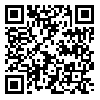Volume 18, Issue 74 (2021)
LIRE 2021, 18(74): 1-6 |
Back to browse issues page
Download citation:
BibTeX | RIS | EndNote | Medlars | ProCite | Reference Manager | RefWorks
Send citation to:



BibTeX | RIS | EndNote | Medlars | ProCite | Reference Manager | RefWorks
Send citation to:
Seraj S A. Comparative analysis of the same capacities of the novel "Tuesdays with Murrie" with Masnavi Molavi. LIRE 2021; 18 (74) : 1
URL: http://lire.modares.ac.ir/article-41-60453-en.html
URL: http://lire.modares.ac.ir/article-41-60453-en.html
, ali.seraj@neyshabur.ac.ir
Abstract: (2698 Views)
The emergence of epistemological relativism in the form of social anomies and issues such as emotional and identity abnormities and crises, psychological fluctuations and disappointments are derived from the current of modernity and the governance of the positivist paradigm. Examples of these cases as vital issues of human life are seen in the “Tuesdays with Murrie” and “Masnavi Molavi”. The novel of “Tuesdays with Murrie, one of the most remarkable Western works, emphasises humanity's permanent problem in materialism and neglects the self-knowledge trap (love and affection, death, spirituality and consciousness, etc.). These subjects have been emphasised in other ways in the collection of Molavi’s works, specifically, the Masnavi Ma’navi. With an analytical-comparative method, the present study aimed to analyse the content of these two works, based on the American school, and provide desirable solutions to get out of the governing situation on human life. The results indicated that the dominant aspect of both works is proposing the crisis of human problems in the material world trap. The distinction between them is in Molavi’s emphasis on going beyond material factors and relying on the ontology of Islamic mysticism.
Article number: 1
Article Type: مقالات علمی پژوهشی |
Subject:
Adaptive literature
Received: 2021/02/3 | Accepted: 2021/05/15 | Published: 2021/12/22
Received: 2021/02/3 | Accepted: 2021/05/15 | Published: 2021/12/22
Send email to the article author
| Rights and permissions | |
 |
This work is licensed under a Creative Commons Attribution-NonCommercial 4.0 International License. |









